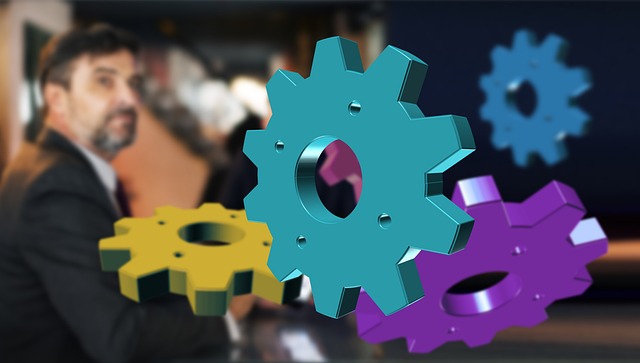Mastering Laravel Best Practices for Modern PHP Web Development
Modern web development demands frameworks that balance productivity, flexibility, and maintainability. Laravel has risen to become one of the most popular PHP frameworks precisely because it offers an elegant syntax, a rich ecosystem, and a philosophy that encourages clean code. To truly excel with Laravel, developers must move beyond the basics and adopt a set of best practices that span the entire lifecycle of a project: from environment setup and architecture design to testing, performance tuning, and deployment. The following guide distills these practices into actionable patterns, helping teams build robust, scalable, and future‑ready applications.
1. Establish a Robust Development Environment
Before writing any code, invest time in configuring a reproducible development stack. Docker or Vagrant provide isolated containers that mirror production, eliminating “works on my machine” surprises. Use a consistent PHP version across local, staging, and production environments, and pin composer dependencies to stable releases. Adopt version control for configuration files, and store secrets in environment variables rather than code. A well‑defined environment not only speeds up onboarding but also lays the foundation for reliable CI/CD pipelines.
Key Environment Practices
- Use
.env.exampleas a template for environment variables. - Run
composer install --no-dev --optimize-autoloaderin production builds. - Leverage
php artisan config:cacheto speed up configuration loading. - Enable
APP_DEBUG=falsein production to avoid leaking sensitive data.
2. Organize Code with a Clean Architecture
Laravel’s default folder structure is sensible, but larger applications benefit from a more explicit separation of concerns. Adopt a layered approach that distinguishes domain logic, application services, and infrastructure. Place business rules in the app/Domain namespace, interact with them via services in app/Services, and let controllers act as thin adapters that handle HTTP concerns. This division keeps tests focused, reduces coupling, and aligns with SOLID principles.
Domain‑Centric Design
- Create Value Objects for immutable data, such as email addresses or monetary amounts.
- Use Repositories to abstract data persistence; interfaces reside in the domain, implementations in
app/Infrastructure. - Keep Eloquent models lightweight; delegate complex queries to Query Objects or Repository methods.
- Apply Domain Events to decouple side effects (e.g., sending a notification after a user registers).
3. Master Routing and Controllers
Routing in Laravel is expressive, but a well‑structured route file enhances clarity. Group routes by resource and middleware, use route names for consistency, and avoid inline route callbacks in production code. Controllers should remain concise, delegating heavy lifting to services or form requests. For API routes, use the api middleware group and version your endpoints to ensure backward compatibility.
Controller Guidelines
- Limit controller methods to no more than 60 words of logic.
- Inject dependencies through the constructor or method injection.
- Return resource collections for APIs using
Laravel::Resources. - Handle validation in Form Request classes to keep controllers lean.
4. Leverage Form Requests for Validation
Form Request objects encapsulate validation rules, authorization logic, and custom messages. By moving validation away from controllers, you achieve two major benefits: improved readability and reusability. When the same form is used in multiple contexts, you can share the Form Request and only override rules as needed. Additionally, the authorize method provides a convenient place to enforce permission checks.
Typical Form Request Structure
class StorePostRequest extends FormRequest
{
public function authorize()
{
return auth()->check();
}
public function rules()
{
return [
'title' => 'required|string|max:255',
'body' => 'required|string',
'tags' => 'array',
'tags.*'=> 'exists:tags,id',
];
}
public function messages()
{
return [
'title.required' => 'A title is required for every post.',
];
}
}
5. Implement Robust Testing Strategies
Laravel’s testing harness is built on PHPUnit and offers expressive helper methods. Adopt a TDD mindset: write tests first, then implement the code that satisfies them. For business logic, use unit tests; for request flows, write feature tests that simulate HTTP requests. Use factories to generate model instances, and database transactions to isolate tests. Mock external services with Laravel’s Mockery integration to avoid real network calls.
Testing Tips
- Group tests by layer: Unit, Feature, Browser.
- Use
RefreshDatabasetrait to reset state between tests. - Leverage
actingAsto simulate authenticated users. - Assert HTTP status, JSON structure, and database changes.
6. Optimize Performance with Caching and Queues
Laravel provides a unified API for caching across drivers (Redis, Memcached, file). Cache frequently accessed data, query results, and even rendered views. For background processing, use queues to offload long‑running jobs. Configure queue drivers according to your environment—database for small projects, Redis or Amazon SQS for high throughput. Always monitor job failures and set up retry policies to maintain reliability.
Caching Patterns
- Cache query results using
Cache::rememberwith an appropriate TTL. - Tag caches to enable targeted invalidation.
- Cache view fragments for pages with heavy layout components.
- Use
Cache::foreversparingly; prefer TTL to prevent stale data.
7. Strengthen Security with Best Practices
Security is a shared responsibility between the framework and the developer. Laravel’s defaults—CSRF protection, input sanitization, and password hashing—form a solid base. Complement these with additional layers: rate limiting, HTTPS enforcement, and input validation. Store secrets in environment files and never commit them. Regularly update dependencies, run security audits, and use Laravel’s Sanctum or Passport for API token protection.
Security Checklist
- Enable
APP_DEBUG=falsein production. - Use
php artisan route:cacheto prevent route tampering. - Set
SESSION_SECURE_COOKIE=trueandSESSION_HTTPONLY=true. - Apply
throttle:60,1middleware to sensitive endpoints. - Sanitize output with
{{}}Blade syntax ore()helper.
8. Deploy with Confidence
Deployments should be automated and repeatable. Use Laravel Forge, Vapor, or a custom CI/CD pipeline to orchestrate builds, migrations, and configuration. Before each release, run php artisan migrate --force in a staging environment to catch schema issues. Enable database rollbacks for quick recovery. Deploy on servers that match your environment’s PHP version, and use process managers like supervisord to keep queues running.
Deployment Steps
- Pull latest code from the repository.
- Run
composer install --no-devandnpm ci --production. - Execute
php artisan config:cacheandphp artisan route:cache. - Run migrations with
--forceflag. - Clear application cache with
php artisan cache:clear. - Restart workers and queues.
9. Continuous Improvement and Refactoring
No codebase stays static. Periodically review the application for technical debt, obsolete packages, and deprecated APIs. Refactor controllers into service classes, replace eager loading with repository methods, and modernize legacy code with new language features. Use static analysis tools like PHPStan and Psalm to detect type violations. Pair refactoring with automated tests to guarantee that behavior remains intact.
Refactoring Guidelines
- Keep
php artisan optimizeas part of the nightly build. - Introduce type hints in PHP 7.4+ for all method signatures.
- Replace magic strings with constants or config values.
- Document public APIs with PHPDoc blocks.
- Maintain a backlog of code smells and prioritize them in sprint planning.
10. Cultivate a Healthy Development Culture
Tools and patterns can only go so far; a culture that values code quality, collaboration, and learning completes the ecosystem. Adopt pair programming for complex features, enforce code reviews for every pull request, and encourage developers to write documentation alongside code. Celebrate refactoring wins and reward adherence to standards. Over time, this culture will reduce bugs, improve onboarding, and accelerate delivery.
Culture Building Practices
- Hold weekly “knowledge share” sessions on new Laravel features.
- Use a style guide (PSR‑12, Laravel CS) and automate linting with
phpcs. - Track technical debt with issue tags and include them in sprint backlogs.
- Encourage mentorship; senior developers mentor juniors through code reviews.
- Provide training on unit testing and integration testing.
Mastering Laravel is an ongoing journey. By embracing a disciplined approach to environment setup, architectural design, validation, testing, performance, security, deployment, and cultural practices, developers can unlock the full potential of this powerful framework. The best practices outlined here form a blueprint that balances speed with quality, ensuring that modern PHP applications remain maintainable, scalable, and resilient in the face of evolving business needs.


